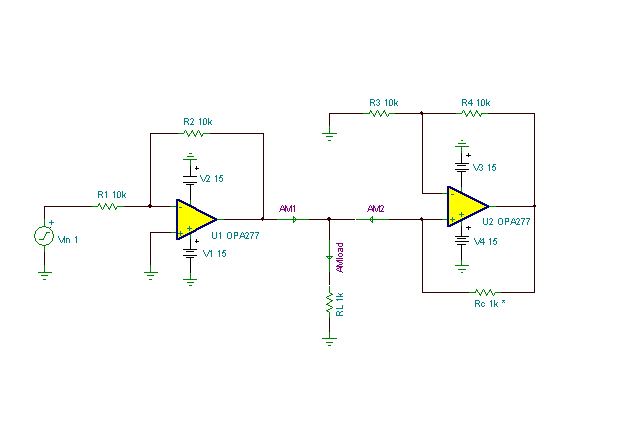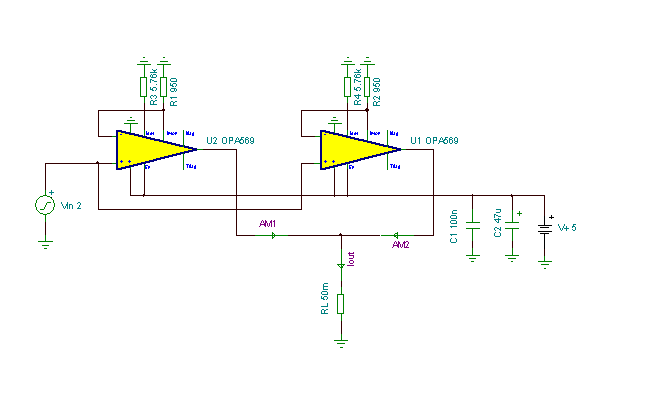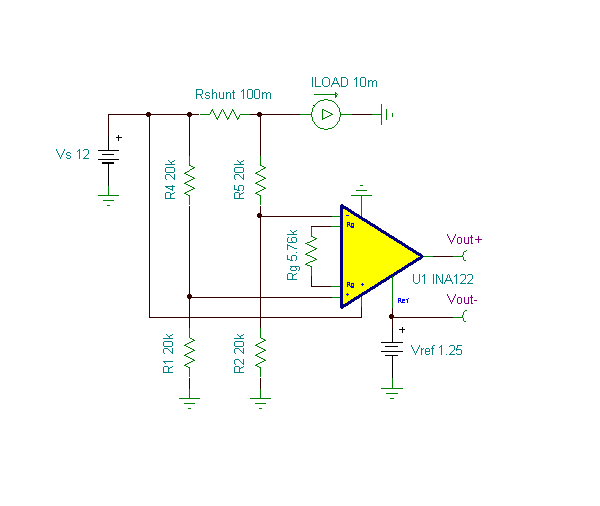Load Cancellation Circuit
Amplifier output loading can be reduced or even eliminated by use of a load cancellation circuit such as that of U2. Without load cancellation, the inverting unity- gain op amp U1 output current is a function of its input voltage Vin and its 1k load resistance RL. At Vin = 1V, both AM1 (U1 output) and AMload (load current) = -1mA.
With compensation adjusted for 100%, the load current is furnished entirely by the compensation circuit. Thus the output of U1 essentially sees an “open circuit”. Rc controls the degree of load current compensation. Bypass capacitors are not shown. (Circuit is created by Neil P. Albaugh, TI-Tucson)
Load Cancellation Circuit:

Online Simulation of a Load Cancellation Circuit:
The great feature of the TINA circuit simulator that you can analyze this circuit immediately with TINACloud the online version of TINA. Of course you can also run this circuit in the off-line version of TINA.
Click here to invoke TINACloud and analyze the circuit yourself or watch our tutorial video!
You can send this link to any TINACloud customers and they can immediatelly load it by a single click and then run using TINACloud.
Michael Koltai
www.tina.com


